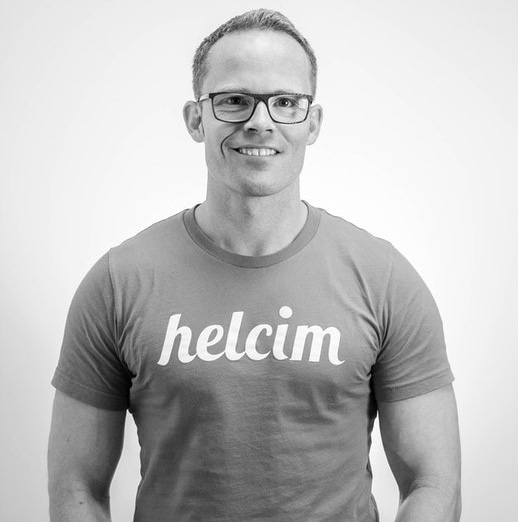Episode 2: Shauna Thome
Crowfoot Village Family Practice and Their Unique Approach to Patient Care
Recently, we sat down with Shauna Thome, the Executive Director of the Crowfoot Village Family Practice in Calgary, Alberta. Crowfoot Village Family Practice (CVFP) partners with patients to deliver team-based, comprehensive patient care.
Their unique patient-based funding model supports a high standard of integrated and accessible patient care that delivers better patient outcomes at a lower cost to the publicly-funded healthcare system.
And today, we’re going to do a deep dive into exactly how it works.
First, we wanted to know more about customer experience versus patient experience and the differences, as Shauna sees them.
Customer experience vs patient experience
As a leader in healthcare and with her experience working with patients over the last 20 years, Shauna explains that she sees healthcare as a system where we treat patients like they’re lucky to have us, not that we’re fortunate to have them. And she sometimes wonders if that’s in the way the system is funded. In Canada, it’s publicly funded and paid for by the Government versus relying on patients to be paying for services.
Next, we wanted to know more about Crowfoot Village Family Practice, particularly regarding their patient care and funding models.
Crowfoot Village Family Practice’s Unique Funding Model
Crowfoot Village is a publicly funded clinic located in northwest Calgary. They provide team-based comprehensive care to about 23,000 patients from Calgary and the surrounding area. Shauna explains that many people don’t know what it means to be publicly funded: they’re funded by the Alberta government.
She also goes on to explain how this patient-care model works in greater detail:
“In some cases, at Crowfoot, we have what’s called a patient-based funding model. So, instead of being paid every time we see a patient, we’re paid a lump sum of funding for a patient’s care for the year. The Alberta government dictates that lump sum, and it’s based on the age and sex of a patient.”
The clinic gets to use the lump sum they are paid for patients to design and deliver care based on each patient’s unique needs. It also allows them to have a large team of health professionals who work to full scope of practice and can see the patient.
So, we came to our next question: We wanted to hear from Shauna about the typical experience new patients undergo when they’re brought to the clinic. Further, we wondered whether it took them a while to adjust to this framework.
Adjusting to a new patient-care model
Shauna says a patient’s first visit—their meet-and-greet visit—is essential for several reasons. In this case, it’s particularly important to allow the patient to learn more about how this particular
patient-care model works. It also helps them adjust to this framework more seamlessly.
This is just one critical part of the patient experience that’s important at Crowfoot. Shauna explains: “We’ve just formed a new program at Crowfoot, called Patient Experience partners. We’ve recruited about 160 volunteers who’ve signed up to join our experienced squad and work with us to design care together.”
The first project focused on the patient intake process, which is of great interest to us at WaitWell. (Read more about how we work hard to help healthcare practices improve patient experiences here)
Next, we wanted to dive deeper into the topic of patient-centred care.
Patient-centred care vs. patient-partnered care
Shauna says patient-centred care means surrounding the patient with a team of professionals with several goals in mind:
- The patient has multiple ways to access care
- They have administrative supports
- They have education on how to use the health system
- Crowfoot communicates well with them at all times
- They never feel alone in the health system
With that being said, Shauna also points out that they’re learning more and more that patients appreciate what’s known as a patient-partnered approach. This means being shoulder-to-shoulder with their health team.
“We’re really trying to step into patients as partners in their care. And that means they’re with us every step of the way.”
As great as this model sounds, we also wondered whether some patients say it just isn’t right for them.
Is this patient-care model suitable for everyone?
Shauna answers that sure, it can happen. She offers up this example:
“We receive a lump sum of funding for a patient’s care for the year. And that means if they go elsewhere to get care, that provider bills the province fee for service, and we pay for that care.
Crowfoot will pay for that care because we’ve actually already been paid to care for the patient. And it’s one of the reasons we offer same-day/next-day care. That way, patients never feel like they have to go somewhere else.
But there are patients who actually want to. This means there’s inconsistency in their care, making it really challenging to provide them with the best quality care. It’s also challenging because if you have even two or three visits outside of Crowfoot, that ultimately erodes any funding that we would have received to care for you for the year.”
So, for some, this patient-care model might not be right. But based on the feedback they collect, it’s a model more clinics might benefit from adopting.
Sharing the Halo
There’s no question healthcare workers are superheroes. Or, as many call them, angels.
This notion leads us to our next topic. We wanted to hear more about Crowfoot Village Family Practice’s phrase “Share the Halo,” including what it means and where it comes from.
Shauna explains it best:
“When a patient calls our practice, the first thing we try to figure out is what health professional is best suited to care for them. Patients often expect that they’re going to see a physician. We know there’s a tendency to be reluctant to see someone else they might not perceive to have the same relationship with. So, we use something called “Share the Halo” to build trusting relationships between patients and all of our care providers.”
Plan, Do, Study, Act
Next, we also wanted to learn about an acronym Crowfoot uses to help them remain ‘agile’ and act quickly.
“We use the acronym all the time. It’s part of the Crowfoot vernacular. Its P, D, S, A, and that stands for Plan, Do, Study, Act,” Shauna elaborates. “We use PDSA cycles constantly in the clinic to make sure we’re very safely evaluating and innovating the entire experience at Crowfoot.”
There’s a case for delivering an excellent patient experience from a business point of view. Clinics that are better run are going to be more profitable, they’re going to be able to retain staff better, and they’re going to have lots of long-term staff.
But they also deliver better patient outcomes.
With that in mind, our next question for Shauna was regarding what evidence they have that Crowfoot
Village is able to deliver a standard of care that actually creates better health outcomes for its patients.
How does this patient-care model affect health outcomes?
Measurement and evaluation are fundamental and core to Crowfoot Village Family Practice and healthcare in general.
As for measuring outcomes at Crowfoot, Shauna highlights how one such study did just that:
“In Alberta, we’re very fortunate to have an organization called the Health Quality Council of Alberta, and they are independent of Crowfoot, and they evaluate essentially the health system or components of the health system in Alberta. They recently conducted a 10-year study of our clinic, and they also do annual studies as well.
In the 10 year study, they found patients of Crowfoot are actually seen less frequently in emergency departments. And their length of stay, if they’re admitted to hospital, is significantly shorter (about 40% shorter than the average Calgarian).”
Considering how costly acute care services can be, these numbers translate to significant cost savings for the health system that benefit all Albertans. In fact, the HQ CA deduces that annually, the Crowfoot cohort saves the health system $4.3 million per year. And over a 10 year period from about 2008 to 2017, the clinic saved the health system $57.3 million.
(Click here next to learn about our queue management solutions for healthcare)
Keep the Conversation Going
We were so impressed with Shauna and how they’re doing things at Crowfoot Village Family Practice. At WaitWell, we believe people are the foundation of everything. There is no such thing as an exceptional customer experience without a staff that feels supported and safe and recognized as humans and in their staff function. So, it was wonderful to hear how Crowfoot Village is taking those steps to support everyone who works there.
Shauna Thome can be found here on LinkedIn. To learn more about the Crowfoot Village Family Practice, visit their website.







